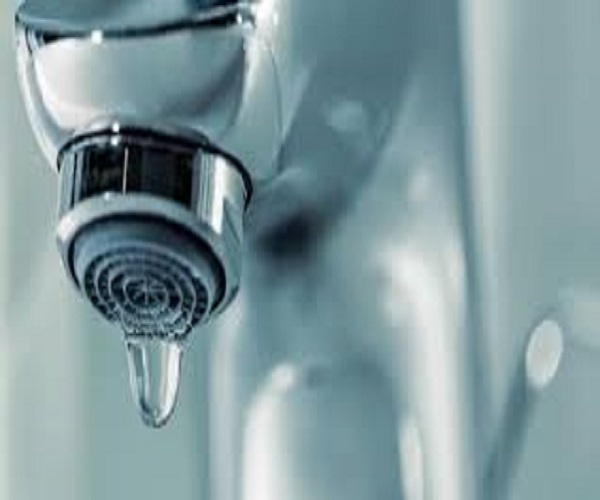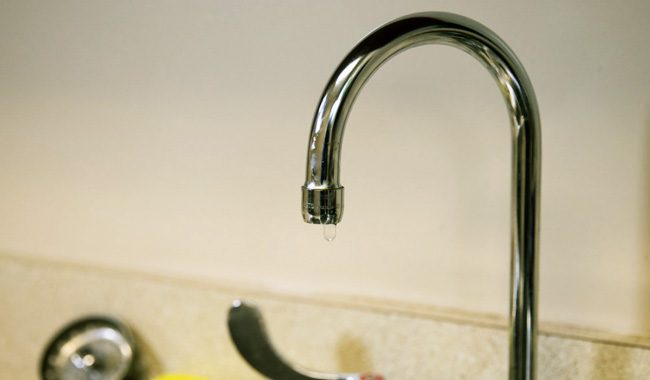Exploring What a Damaged Faucet Can Damage Your Home
Exploring What a Damaged Faucet Can Damage Your Home
Blog Article
Each person will have their private way of thinking when it comes to The Environmental Impact of Leaky Faucets.

Introduction
A leaking tap may feel like a minor inconvenience, however its consequences extend far past the periodic drip. Understanding the effects of a leaky faucet is important for both home owners and the environment. In this article, we'll explore the various effects of this typical home problem and why addressing it quickly is important.
Reasons For Leaky Faucets
Leaky taps can arise from a range of elements, including wear and tear, high water stress, and rust. In time, the constant use faucets can bring about worn-out seals and gaskets, causing leaks to develop. Furthermore, extreme water stress can place strain on plumbing components, causing leaks. Deterioration and rust can also damage tap elements, making them prone to leak.
Water Wastefulness
Among one of the most considerable effects of a leaking faucet is water waste. Even a tiny drip can add up to gallons of drainage over time. This not only increases water bills yet likewise adds to water scarcity and environmental destruction. Dealing with dripping taps quickly is critical for conserving this valuable source and decreasing its impact on the world.
Financial Effect
Along with drainage, dripping taps can additionally have a significant financial effect. Increased water bills are a direct repercussion of water waste, costing property owners thousands of dollars yearly. Moreover, the price of fixing water damages brought on by leakages can be substantial, particularly if left neglected for an extensive duration.
Ecological Impact
The environmental effect of leaky taps prolongs past water waste. By conserving water, homeowners can contribute to broader efforts to minimize water scarcity and shield natural ecological communities. Lasting alternatives such as rain harvesting and water-efficient components can better reduce the environmental footprint of home water usage.
Technological Solutions
Improvements in modern technology have actually brought about the growth of clever taps and water-saving tools that aid decrease water wastage. Smart faucets utilize sensors to spot motion and readjust water circulation appropriately, minimizing waste without compromising benefit. Water-saving devices such as aerators and low-flow showerheads are also reliable in conserving water without compromising efficiency.
Global Perspectives
While leaking taps might look like a localized concern, they contribute to more comprehensive international difficulties such as water deficiency and environment modification. In areas currently encountering water stress, every decrease counts, making leakage prevention and repair essential. By embracing water-saving techniques and investing in lasting technologies, homeowners can play their component in addressing these pressing global problems.
Governing Steps
Government guidelines play an important duty in mitigating the impact of dripping taps and advertising water preservation. From developing codes that need water-efficient fixtures to water-saving incentives and rebates, policymakers have a range of tools at their disposal. By implementing and applying these regulations, federal governments can make certain that homeowners focus on water conservation in their daily lives.
Area Effect
Attending to leaking faucets calls for collective efforts at the area degree. By raising understanding about the relevance of water preservation and giving sources for leak detection and repair work, neighborhood authorities can empower homeowners to do something about it. Initiatives such as water-saving rebate programs and leakage detection projects can incentivize actions change and promote accountable water use.
Situation Researches
Real-life instances of the influence of dripping taps highlight the value of aggressive upkeep and prompt repair services. From water damage to escalating water bills, the effects of overlooking leakages can be severe. By sharing these case studies, home owners can much better recognize the importance of addressing leaky taps immediately.
Educational Campaigns
Educational projects play a vital function in raising recognition about the results of leaky taps and promoting water preservation techniques. Through workshops, workshops, and online resources, property owners can find out how to detect and repair leakages themselves. By empowering people with understanding and tools, educational campaigns can cultivate a culture of accountable water use within neighborhoods.
Health and wellness Worries
Dripping taps can develop helpful environments for mold and mold growth, positioning wellness threats to owners. The visibility of mold and mildew can exacerbate breathing problems and allergies, especially in vulnerable people. Furthermore, water damage arising from leaks can endanger the architectural integrity of buildings and cause expensive repair work.
Do it yourself vs. Specialist Repair service
When faced with a dripping faucet, property owners often question whether to try repair services themselves or work with an expert plumber. While do it yourself repair work can conserve cash, they might not always attend to the hidden problem properly. Expert plumbings have the proficiency and devices to identify and deal with leakages correctly, guaranteeing long-lasting services and satisfaction for property owners.
Safety nets
Preventing leaky faucets needs normal upkeep and proactive steps. Easy tasks such as changing worn-out washers and seals can avoid leakages from creating. In addition, updating to premium fixtures and minimizing water stress can aid extend the life-span of taps and decrease the danger of leaks.
Final thought
In conclusion, the impacts of a leaking faucet expand much beyond the periodic drip. From water wastage and raised water expenses to wellness issues and ecological impact, the effects of neglecting leakages can be significant. By attending to leaky faucets immediately and taking on water-saving techniques, property owners can alleviate these results and add to a more lasting future.
Causes and Consequences of a Leaky Faucet
Although it’s a relatively common issue, many people don’t know what causes a leaky faucet. Additionally, few homeowners are familiar with the consequences of leaky taps, causing them to ignore the problem. However, much of the damage caused by leaky faucets can be prevented by reacting swiftly.
In this article, we’ll provide a better understanding of leaky faucets by listing their causes and consequences.
What causes a leaky faucet?
Many internal pieces of the faucet responsible for turning the water on and off can break. Consequently, they can’t function correctly and will give rise to leaks. Here are a few common causes of leaks:
Loose washers
The washer opens and closes when turning the faucet on and off. This movement produces friction, causing wear and tear. Over time, the washer gets worn out and won’t fit closely to the valve seat, leading to a leak.
Worn out O-rings
O-rings seal gaps between the internal parts of the faucet. If they fail, water can seep through these gaps and result in a leaky faucet.
Poor seals
Many faucets have inlet seals that let water freely flow when turning the faucet on and stop when it is turned off. If there’s too much sediment or water pressure, the seals can suffer damage and cause the faucet to leak.
Corroded valve seat
The valve seat sits at the bottom of the faucet’s mechanism. It plays a part in turning the tap on and off, and it can corrode due to repeated usage. If so, water will be dripping around the handle area.
Worn out faucet cartridge
Single-handle faucets have a faucet cartridge that helps control the water flow. Due to normal wear and tear, the cartridge can start leaking.
What are the consequences of a leaky faucet?
High water bills – Dripping faucets can lead to much higher water bills due to the amount of water wasted. In particular, as much as 17 gallons of water can be wasted during a single day if a faucet has about one drip per second. Mold and rot – Mold can develop in any moist area, making the area around leaky faucets an ideal breeding ground. Also, any wooden elements affected by the leak can eventually rot. Overflows and drain clogs – If the leak persists for a while, it can cause a lot of stress on the plumbing system and lead to overflows and drain clogs. Water stains – Minerals accumulating in the sink due to a leaky faucet can be quite tricky to remove. In the worst-case scenario, you might need to buy a new sink. https://www.jimmyjoesplumbing.com/blog/causes-and-consequences-of-a-leaky-faucet

As a person who reads about Potential Health Risks Associated With Leaky Faucets, I figured sharing that excerpt was worthwhile. Do you know about someone else who is curious about the topic? Take a moment to share it. Thank you for going through it.
Report this page